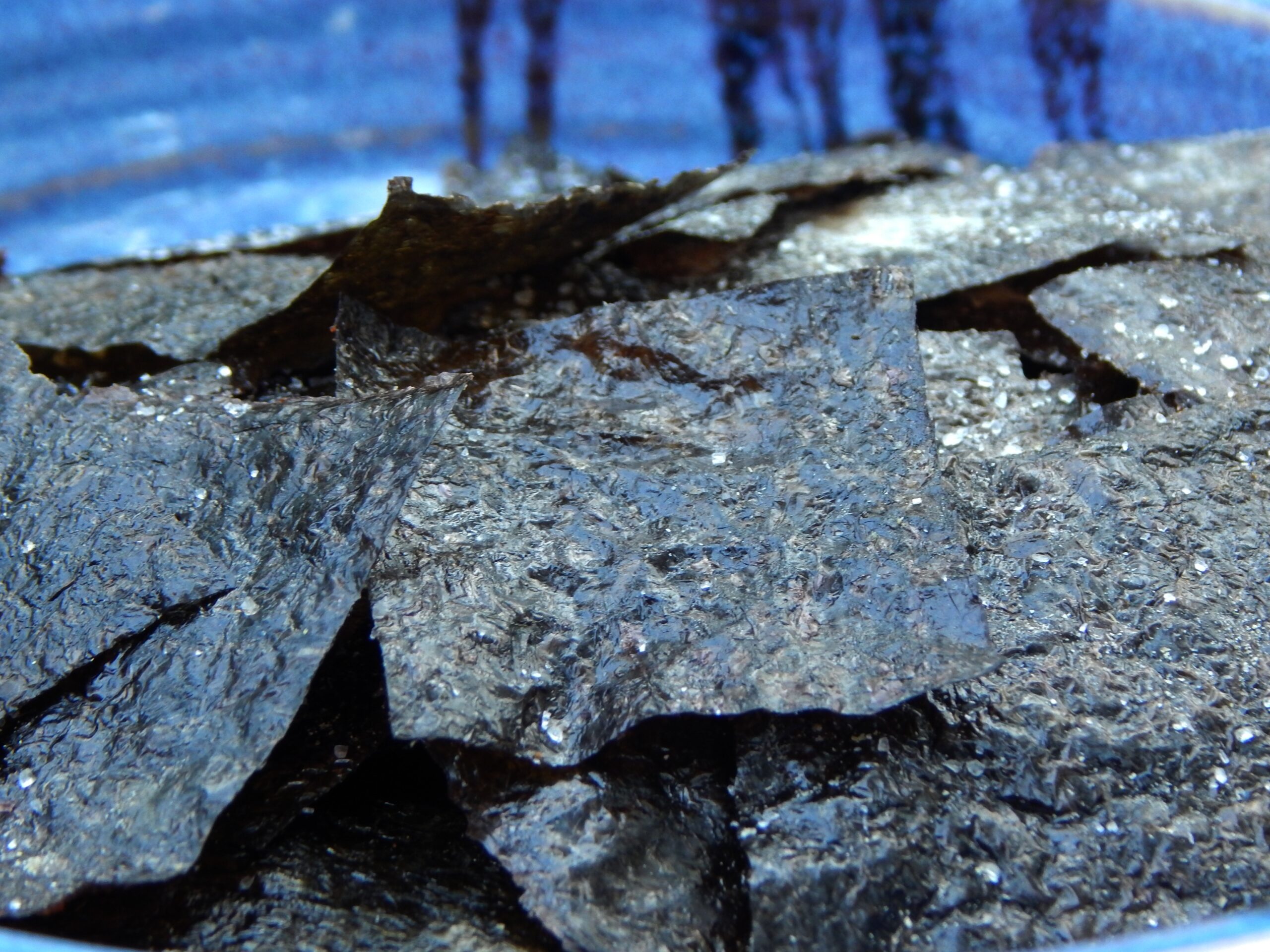Crunchy potato and tortilla chips are among my guilt-laden food cravings, so I regularly experiment with crispy alternatives. When I discovered seasoned seaweed snacks, I found them highly munchable but hated the bulky packaging around the single-serving packets. So I started making my own.
The small squares of dried seaweed usually start from paper-thin sheets of untoasted Japanese nori or unseasoned Korean parae-gim. Yet more easily sourced yaki nori, the toasted seaweed sheets used for sushi rolls, works almost as well. It’s a little like buying roasted almonds and cashews, rather than raw ones, for Home-Spiced Nuts: You’re roasting the snacks for a second time, so they don’t absorb quite as much flavor but can still be seasoned as you like.
When I roll sushi at home or in my cooking workshops, I only use about three-quarters of a nori sheet for futomaki. This helps to keep the rolls from becoming too fat and the seaweed from becoming chewy. It also leaves behind small strips of nori, perfect for cutting into squares for seaweed snacks. I also snip the leftover strips, along with toasted sesame seeds, onto freshly popped popcorn, rice bowls, Asian noodle dishes and quick pickles.
To keep seaweed snacks crisp, use a light hand when seasoning them. Horseradish and wasabi powders lose their potency quickly if heated, so sprinkle these on after roasting. A little lemon or lime juice spritzed onto the hot sheets can help the powder stick. If I squeeze a lime half directly over the pieces, they tend to get soggy, so I suggest using a spray bottle or a citrus mister that pokes directly into a fresh lime. Other flavors can be sprinkled on or mixed into the oils before you cut and bake; try garlic powder or minced garlic, finely crushed chilies or chili paste and ground ginger or a splash of pickled ginger brine.
Homemade Roasted Seaweed Snacks
Makes 36-48 pieces
4 sheets toasted or untoasted nori or parae-gim
1/2 teaspoon sesame oil
1 teaspoon olive oil
Pinch of sea salt
Lemon or lime juice (optional)
1/8 teaspoon horseradish powder or wasabi, or more to taste
On a dry surface, lay out the seaweed sheets. In a small bowl, combine the sesame and olive oils. Using your fingers or a pastry brush, lightly coat the seaweed sheets with oil.
Stack the sheets, and then cut them with kitchen scissors into nine to 12 pieces. Sprinkle with salt.
On a rimmed baking sheet, arrange the pieces in a single layer. Bake at 250°F for about 15 minutes, checking after 10 minutes and rotating the pan as needed, until the pieces are baked evenly and change color slightly from black to green. As soon as you pull them from the oven, lightly spritz the pieces with lemon or lime juice, if desired, and then dust them with horseradish powder. When cooled, store at room temperature in an airtight container and eat them within three days for the best texture.
Julie Laing is a Bigfork-based cookbook author and food blogger at TwiceAsTasty.com.
